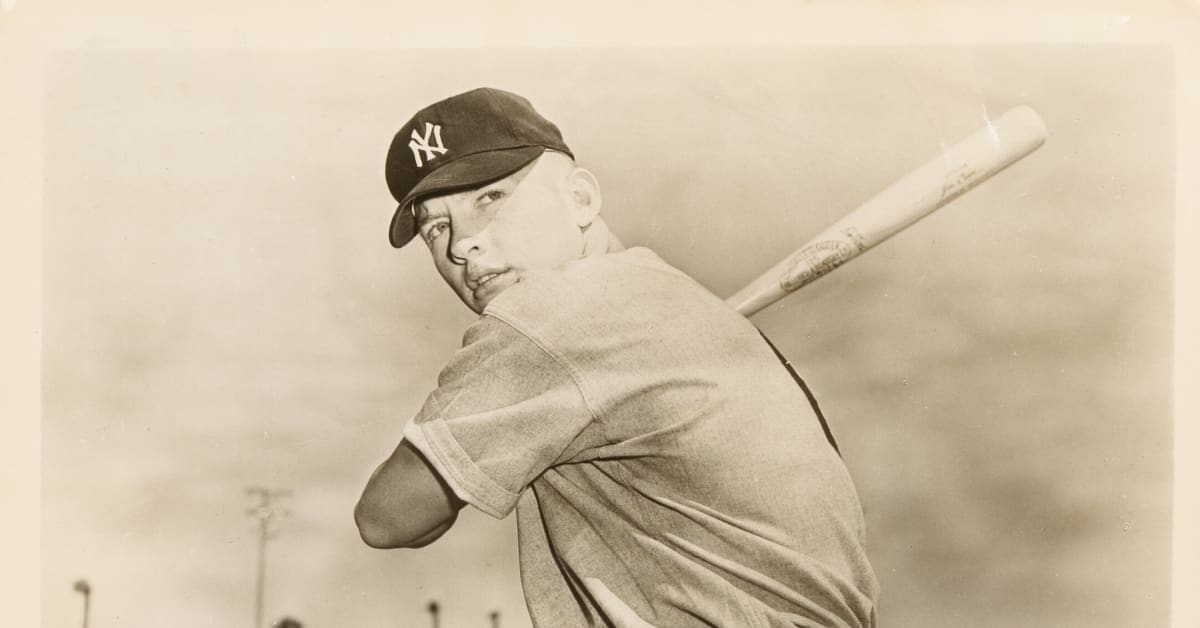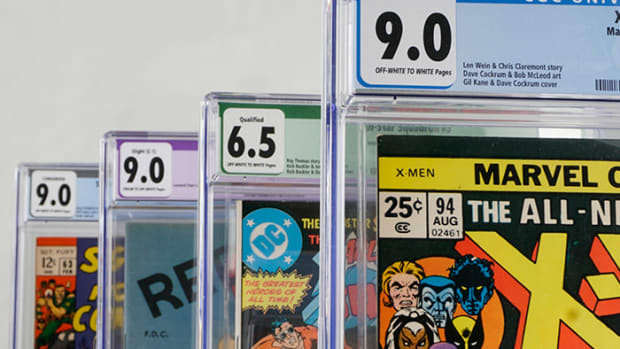
Inside the Growing Popularity of Type I Photos
Sports Illustrated aims to feature only the best products and services. If you buy something via one of our links, we may earn a commission.
The sports collectibles market continues its astounding ascent. Limited-edition trading cards, game-worn jerseys, game-used bats and an array of autographed items from legends of yesteryear proceed to set new auction records every month. But one area that took some time to gain traction is known as “Type I Photography.”
Defining the category
The popularity of vintage photography is nothing new. But the astronomical prices being paid for these prints is absolutely new. And it has a lot to do with PSA helping define the category in 2007.
Collectors always appreciated classic black-and-white pictures showcasing their heroes, but weren’t quite sure about the specifics behind each photo.
Did they just acquire a first-generation print made directly from the original negative, perhaps from the turn of the last century? Or was it a reprint made decades later and not directly from the photographer’s actual negative?
Did any of these details even matter? Questions were plentiful but answers were few.
That’s when a pair of entrepreneurs named Marshall Fogel and Henry Yee stepped in to shed some light and in the process created a new collecting category. The release of their book A Portrait of Baseball Photography - The Definitive History of Our Pastime’s Pictures, News Services, and Photographers in 2005 made quite an impression and PSA quickly joined in their pursuit.
Original photos now certified by PSA are classified based on categories devised by Fogel and Yee called Types I, II, III and IV. The system is based on determining a photograph's originality or reproduction, development process, and publication date.
Type I photos are considered the most desirable and valuable of the four photograph types because of their vintage and originality.
By definition, a Type I photo is a first-generation photograph developed from the original negative during the period (within approximately two years) from when the picture was taken.
Type II, meanwhile, is a photo made from the original negative after more than two two years from the negative’s creation.
Type III and Type IV photos are made from duplicate negatives, not the original, and are graded as either within two years of the duplicate negative’s creation or after two years. Understandably, those have less value than the Type I and II varieties.
Why is any of this so important? Because determining the origin of the printed photo can sometimes result in an incredible windfall.
For example, in 2015, a PSA-certified Type I photo of Mickey Mantle identical to the one used to produce his 1951 Bowman #253 rookie card sold through RMY Auctions for a then-record $71,700.
In 2019, a PSA-certified Type I original news service photo showing Mantle in 1951 attending his first spring training with the New York Yankees sold privately for $375,000.
What added to the allure of the latter photo was that it featured the exact image used for Mantle’s celebrated 1952 Topps #311 card. When it was sold, it was one of only three Type I examples known to exist.
“People don't realize how rare these photos are," said Yee, who is the lead photograph authenticator for PSA/DNA. "Most of them were only issued to the media for newspaper and publication use. Many of the photos loaned for usage were discarded or never returned. Over the decades, countless more were squandered or tossed away when they were worn from age.
“But it was the digital age from the early '90s that marked the medium's mass extinction. There was no longer a need for working news libraries and archives to keep hard-copy prints as millions of photos that once occupied an entire warehouse could now be kept in a small desk drawer on floppy disks.”
By discarding so many rare, original prints, a new collectibles market was born.
Teaming with PSA
“Back in my early days at PSA, one of our goals was to become as much of a one-stop shop for authentication and grading as we could,” said Joe Orlando, the former president at PSA (2002 to 2018) who now serves as executive VP of Sports at Heritage Auctions. “Collectors, such as myself, like uniformity. If we could take the PSA brand into various categories outside of trading cards, it would make it easier for collectors to expand their horizons.
“Vintage photos, like game-used items, tickets, and a few other memorabilia categories, appeared underappreciated in the market. This was primarily due to a lack of information and structure. If PSA could help in that regard, we felt it would raise awareness about the beauty and scarcity that vintage photos can offer.”
Another impressive example that demonstrates the meteoric rise in value of Type I photos is the coveted July 23, 1910 photo taken by renowned sports photographer Charles M. Conlon. It shows Detroit Tigers Hall of Famer Ty Cobb sliding hard into New York Highlanders’ third baseman Jimmy Austin for a stolen base during a game at New York’s Hilltop Park.
In 2015, the only known PSA-certified Type I print of this iconic image sold for $77,098 through RMY Auctions. Four years later, that same print sold privately via Hunt Auctions for $250,000.
But 13 months after that, in Dec. 2020, Robert Edward Auctions (REA) sold a second, confirmed Type I example of the renowned image (albeit in better condition than the first) for an astounding $390,000.
It remains the highest price ever paid for the celebrated image.
“Action photos before World War I are rare because of the limitations of the cameras and shutter speeds back then,” said Yee. “This is a remarkable photo for its time.”
The licensed steps that Yee and lawyer/uber-collector Fogel created are now the standard used in the buying and selling of vintage photography in the collectibles industry. The process PSA employs to classify photos can be painstaking. Just ask Yee.
“This involves several factors,” he said. “The first is determining the type of paper used, then the period when the paper was manufactured, and then several other characteristics that are correct for that specific issuer which can be one of the tens of thousands of news photo services, agencies, photographers or photo studios that have issued photos since 1900.
“Then we have to determine if the photograph was made off the original camera negative or a duplicate/copy negative. And that’s even before the research of the actual mage. That is the who, what, when, where and how, and whether a subject is correctly identified or if the event depicted needs additional research and confirmation.”
‘Education is the key’
Awareness of the category is critical as is educating collectors about its vast potential.
“Photography has always been a wonderful segment of collecting, and I think the rise in popularity is attributable to the increased exposure it has received in the last few years,” said Brian Dwyer, president of REA. “There's been some incredible research done in this space as well as some great archives and photos coming to market recently which have put original photography on the radar of collectors in a way that is new and exciting. Any time a big price is realized at auction it causes people to stop and learn more.”
Khyber Oser is the director of Vintage Memorabilia and Photography at Goldin Auctions and is also a co-author of A Portrait of Baseball Photography. He provided his own assessment of the genre.
“Photos have broad appeal because they're the ultimate crossover piece,” he said. “Card collectors like owning the rare original images of their iconic cards. Game-used collectors and sneakerheads like seeing their favorite gear in photos. And art collectors recognize the artistry of all these famous sports photographers. It was only a matter of time before collectors of all stripes got on board the photo train.”
Orlando added: “Education is the key. An informed buyer is a confident one. It’s easy to see why collectors are drawn to photos. They help bring the legends of the past to life by telling a story in a snapshot of time.”
Sports Illustrated aims to feature only the best products and services. If you buy something via one of our links, we may earn a commission.







